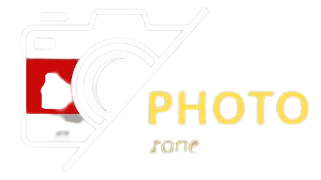I receive a lot of messages from our readers who want to know how they can achieve good quality bokeh from their point-and-shoot cameras. I thought of publishing an article in an Photography FAQ post, but I then decided to expand on the topic and go into detail instead of providing the answer in a concise manner. I hope that those with point-and-shoot cameras will comprehend everything I have to say, as I’ll try all I can in explaining the topic in a simple manner.
1.What is Bokeh?
As I have explained within my ” What is Bokeh” article, Bokeh is the quality of blurred or “blurry” portions of an image created by cameras. The main word in this case is “quality” as bokeh is not the primary name used for the blurred areas that make up the picture. If you hear someone say “the blurred bokeh of that photo is beautiful and creamy” it is simply talking about the overall quality and appearance of the out-of-focus region, not the blurred space itself.

Notice the soft, out-of-focus areas behind this adorable boy? This is how quality bokeh usually is. What can you do to achieve the same effect on an ordinary point and shoot camera?
2.How to Get Background Blur in Your Images
Before we get into the bokeh effect, let’s look at how you can initially isolate a subject from background using a point-and shoot camera, and then create blurred photographs. When I refer to “blur” refers to blurring the “out-of-focus” region and which is not motion blur. Digital cameras are able to create out-of-focus regions when the lens is focused on an extremely close object and has a large opening, referred to as “aperture”. Here’s what you need to do in order to create a blur in your subject’s background:
- If you have a high-end point-and-shoot camera, change the camera’s settings on to ” Aperture-Priority”. If your camera doesn’t come with this mode, change it on “Macro” and “Portrait” mode that also work well.
- Shut off the flash on your camera.
- Ideally, you should do this outside during a sunny day to shoot at low sensor sensitivity or “ISO” and to get lots of light reflections/highlights into the image. If you’re shooting indoors, be sure you do it during the day, and shoot in a well-lit space with lots of windows behind the photographer. If not, you’ll have to utilize tripod.
- Choose a small-sized subject that has plenty of textures to be able to see it without difficulty.
- Be sure that the subject is physically separated away from background. For instance, if you are taking a photo of a soda can be sure that the items behind the can are far away. If there are objects that are close towards the object, they’ll be focused (which isn’t the way you want to be) and putting objects that are far away could cause them to drift not in focus.
- Make sure all objects that are in your background are reflective surfaces. Metal and glass surfaces are excellent candidates to use as backgrounds.
- Place the point and shoot camera close to the object you wish to appear as sharp in your photo as you can.
- Make sure you focus on your subject using half pressing shutter. Make sure your subject is properly focused.
- Take a photo and then view it on the camera’s LCD Be sure that the subject is sharp while the background appears blurry.
- If your camera is equipped with an optical zoom function, you can zoom to the fullest extent and take a new picture.
Here’s an example of one that I took indoors:

The champagne bottle to the left was the main subject and the flower arrangements on the other side of the table look blurred or out of focus. The photo above was taken using my iPhone that I use as a point-and-shoot camera. As you can see, it is possible to create blurred backgrounds using virtually any camera there.
The above image is an excellent method to test the kind of bokeh that the camera and lens can produce. If the blur in the background appears lovely and smooth (which generally means great blur) You could employ the same method to separate your subjects later on.
The blurred background in the image above looks very different from the previous image, does it? Let me discuss the reason.
3. Limitations of Point and Shoot Cameras
As I’ve shown above that almost every camera is capable of creating out-of-focus zones when the camera is pointed on a close-up subject. But there are a few cameras that are capable of producing bokeh that looks good. There are many reasons to this:
- The cameras that point-and-shoot feature tiny sensors. Size of camera’s sensor is directly proportional to the depth of field (the portion in the photo that is to be sharp as “in the focus”) the smaller the sensor of the camera is, the greater the size and area of focus. In comparison to film cameras and full frame digital cameras point-and-shoot cameras generally come with sensors that are between 15 and times smaller. This means that the image which appears sharp is bigger than would be found on the DSLR camera, which makes it difficult to separate the subject. This is why in the previous instructions, I advised you to stay away from background objects from your subject. If you keep them near to your subject, they’ll be sharp because of the wide field of view.
- The lenses of point-and-shoot cameras aren’t created to create bokeh that looks good and are extremely limited in terms of the minimum and maximum apertures as well as focal lengths. The majority of lenses used in point-and-shoot cameras are wide-angle and come with shorter focal lengths that fill as large of an space as they can which means that they can put most images in the frame. The lenses of optical zoom cameras usually have apertures that change to a larger amount when you zoom into (thus increasing the depth of field) and make it difficult to distinguish subjects from background.
- The majority of point and shoot cameras are made to bring everything in focus in order that the photographs that people take don’t end up blurry because of focus issues. This is the reason that most of the focusing on point and shoot cameras is automated. This includes the use of facial and scene recognition technology specially designed to focus on the correct area of focus. This is because most photographers using point-and-shoot cameras require sharp images only – they are not concerned about out-of-focus regions or bokeh.












Leave a Reply